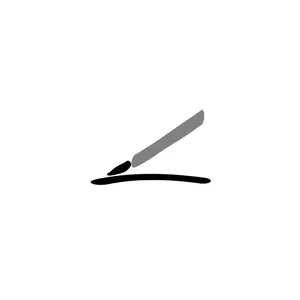Guided Journaling

Guided Journaling is a tool for the bottom of the U-process and builds on a completed co-sensing phase. It cannot stand alone! It allows participants to step into a deeper level of self-reflection and is often followed by a solo experience to expand on the insights that arise.
Goal
Guided Journaling invites practitioners into a process of self-reflection. The journaling questions follow the U-process from Presencing Institute
Instructions
Principles
- Write first, then think. Encourage people to just start writing and see what emerges.
- Respect privacy. If you’re facilitating Guided Journaling for others, it’s important that you never require participants to share their journaling notes in public.
- Reflect on the experience. After a journaling practice you may want to create an opportunity to reflect with others. But this is always voluntary.
Process
Setup
- People: This tool can be used with groups of any size.
- Place: Prepare a quiet space that provides each participant with some privacy.
- Time: A minimum of 45 minutes and up to 90 minutes, depending on the context.
- Materials: Pen and paper for each participant.
Steps
Step 1: Share “What is journaling?”
Journaling means letting your hand guide your writing. Journaling does not mean “think first and then write”; instead, it means “put pen to paper and just begin to write.” Guided journaling uses the same method, but each journaling step is triggered by a question.
Step 2: Read the Suggested Journaling Questions
Read the questions in sequence, moving when you sense that the majority of the group is ready. Be
sensitive to the amount of time spent: don’t let the session drag, but also don’t rush it. It is important to
get into a flow and not to think too much.
You may adjust the journaling questions to the group or team that you are working with, but try to adhere to the purpose and intent of each question. The questions should follow the U-process but might benefit from being adjusted to the language, focus, or culture of the group you work with.
- Being born I: Over the past days and weeks, what did you notice about your emerging Self and what is wanting to be born?
- Being born II: What did you notice about what is wanting to be born in your context or community?
- Frustration: What about your current work and/or personal life frustrates you the most?
- Happiness: What about your current work and/or personal life inspires and energizes you the most?
- Helicopter I: Watch yourself from above (as if in a helicopter). What are you doing? What are you trying to do at this stage of your professional journey? Your personal journey?
- Helicopter II: Watch your collective journey from above. What are you trying to do collectively at this stage of your collective journey?
- Your younger self: Look at your current situation from the viewpoint of yourself as a young person, at the beginning of your journey: What does that young person have to say to you?
- Footprint: Imagine you could fast-forward to the very last moments of your life, when it is time for you to pass on. Now look back on your life’s journey. What would you want to see at that moment? What footprint do you want to leave behind on the planet?
- From that future point of view: What advice would you give to your current self? Presencing Institute Toolkit
- Now return to the present and crystallize what it is that you want to create: your vision and intention for the next 3–5 years. What vision and intention do you have for yourself and your work? What are some of the essential elements of the future that you want to create in your personal, professional, and social life? Describe or draw as concretely as possible the images and elements that occur to you. 1
- Feel the connection with the global community devoted to Leadership for Awareness-based Systems Transformation. What is our collective highest future possibility? What could we be an instrument for? What could we collectively create within the next 3–5 years?
- Letting go: What would you have to let go of in order to bring your vision into reality? What is the old stuff (habits, mindsets, etc.) that must die? What is the old skin (behaviors, assumptions, etc.) that you need to shed?
- Letting come: Where do you find the Seeds of tomorrow in your context and environment NOW?
- Prototyping: Over the next three months, if you were to prototype a microcosm of the future in which you could discover “the new” by doing something, what would that prototype look like?
- People: Who can help you make your highest future possibilities a reality? Who would be your core helpers and partners?
- Action: If you were to take on the project of bringing your intention into reality, what practical first steps would you take over the next 3 days?
Resources
- Scharmer, Otto. 2007. Theory U, Second Edition, Chapter 21. Oakland, CA: Berrett-Koehler.
Attachments
- guided_journaling_cover.webp
Background
Reproduced under CC License and with credit to the Presencing Institute.
Author
Facilitation methods and techniques reproduced in the SessionLab Library under the appropriate Creative Commons license. All methods contain attribution to the source material and are reproduced with permission.
More about author